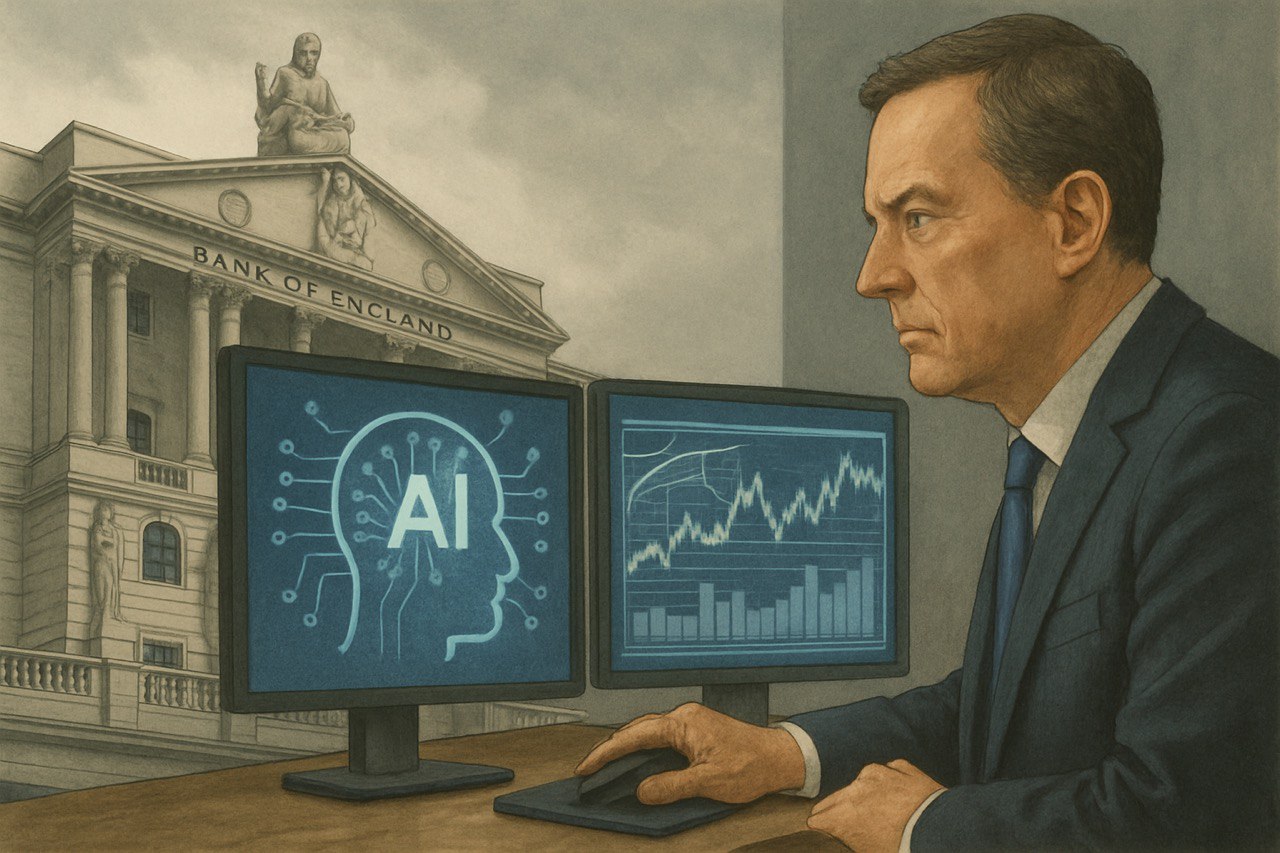Artificial intelligence (AI) is rapidly transforming the financial sector, offering benefits like increased efficiency, cost reduction, and enhanced fraud detection. However, as of May 2025, the Bank of England has intensified its oversight due to potential risks, a move detailed in recent reports such as the April 2025 “Financial Stability in Focus: Artificial intelligence in the financial system” (Bank of England – Financial Stability in Focus: Artificial intelligence in the financial system). This response explores the Bank’s measures, the risks involved, and the broader implications, written in the style of Anna Petrova, a seasoned journalist known for her engaging, human-centered storytelling.
Identified Risks and Their Implications
The Bank of England has outlined several key risks associated with AI in finance, as highlighted in their recent publications. These include:
- Systemic Risks: Greater use of AI in core financial decision-making, such as lending and risk assessment, could lead to mispricing and misallocation of credit. This could destabilize the financial system if AI models make errors, especially if multiple institutions rely on similar models.
- Market Instability: Increased AI use in financial markets risks correlated positions, where institutions make similar decisions based on AI insights, potentially amplifying market volatility during stress events. This herding behavior could skew markets and exacerbate instability.
- Operational Risks: Reliance on third-party AI service providers poses challenges, particularly with potential concentration risks. If a small number of providers dominate, a disruption could cascade across the sector, impacting operations at multiple financial institutions.
- Cybersecurity Threats: AI can enhance defensive capabilities, such as detecting fraud, but it also increases threats. Malicious actors could use AI for sophisticated attacks like deepfakes, prompt injection, or data poisoning, which could trick systems or individuals into making erroneous financial decisions. The 2024 AI Survey identified cybersecurity as a top perceived risk, expected to grow over the next three years.
These risks are not hypothetical; they reflect real concerns backed by data, such as the Bank’s 2024 survey showing 75% of firms already using AI, with 10% planning to adopt it soon (Bank of England – Artificial intelligence in UK financial services – 2024).
Bank of England’s Response Measures
To address these risks, the Bank of England has implemented a multifaceted approach, combining monitoring, regulation, and collaboration:
- Surveys and Data Collection: The Bank conducts regular surveys, with the 2024 survey revealing that 55% of AI use cases involve some form of autonomous decision-making, but only 2% are fully autonomous. This indicates significant human oversight, which is reassuring but also highlights the potential for increased autonomy in the future.
- AI Consortium and Public-Private Engagement: The AI Consortium facilitates collaboration between regulators and industry experts, ensuring shared knowledge and best practices. This platform, detailed in the Bank’s research initiatives (Bank of England – AI Consortium), helps identify and mitigate risks early.
- Regulatory Updates: Existing microprudential regulations, such as model risk management, are being adapted to cover AI, as noted in discussion papers like DP5/22 – Artificial Intelligence and Machine Learning (Bank of England – DP5/22 – Artificial Intelligence and Machine Learning). The Financial Services and Markets Act 2023 introduces a new regime for critical third parties, with rules published in November 2024 (Bank of England – Supervisory Statement 6/24), addressing concentration risks.
- Cybersecurity Focus: The Bank is working with the Cross Market Operational Resilience Group (CMORG) AI Taskforce to develop scenarios for mitigating AI-enhanced cyber threats, informed by international efforts like the G7 Cyber Experts Group. This is crucial given AI’s dual role in enhancing defenses and enabling attacks.
These measures are designed to ensure safe AI adoption, supporting financial stability and sustainable growth, with ongoing monitoring to identify additional mitigations as needed.
Human-Centered Insights and Personal Observations
As Anna Petrova, I bring a decade of experience writing engaging, human-centered stories, and this topic resonates deeply. I’ve seen AI evolve from a futuristic concept to a daily reality, from recommendation algorithms to financial decision-making tools. A personal anecdote: a friend in fintech shared how AI has transformed his company’s loan processing, making it faster and more accurate. But he also expressed concerns about bias in AI models, a worry echoed in industry discussions. This balance between innovation and caution is at the heart of the Bank’s efforts, and it’s heartening to see them prioritize stability while fostering growth.
The human element is crucial here. While AI offers efficiency, it’s not a silver bullet. My friend’s concerns about fairness highlight the need for oversight, and the Bank’s measures—like ensuring human supervision in most AI use cases—feel like a step in the right direction. It’s like walking a tightrope: you need to move forward, but safety nets are essential.
Balancing Innovation and Potential Benefits
It’s important to acknowledge AI’s potential benefits, which the Bank also recognizes. AI can revolutionize finance by reducing costs, boosting productivity, and enhancing fraud detection. For instance, AI can analyze transaction data in real-time to spot money laundering patterns, a task nearly impossible for humans to do manually. Reports like the ECB’s analysis suggest banking could see $200–340 billion in added economic value annually from AI, largely through increased productivity (European Central Bank – The rise of artificial intelligence: benefits and risks for financial stability).
However, this innovation must be balanced with caution. The Bank’s approach ensures that while AI can thrive, it doesn’t compromise financial stability. This balance is evident in platforms like PocketOption, a trading platform my colleague mentioned for its user-friendly interface and AI integration. It’s fascinating to see how such tools are adapting, offering traders AI-enhanced strategies. If you’re curious, you might explore PocketOption to see how AI is shaping trading.
Conclusion and Call to Action
In conclusion, the Bank of England’s tightened control over AI in finance reflects a necessary response to potential risks like systemic instability, market volatility, operational disruptions, and cybersecurity threats. Their measures—surveys, regulatory updates, and collaborations—aim to ensure a stable financial system while fostering innovation. As we move forward, it will be fascinating to see how this balance plays out. What do you think? Is AI the future of finance, or are the risks too great? Share your thoughts in the comments below.





